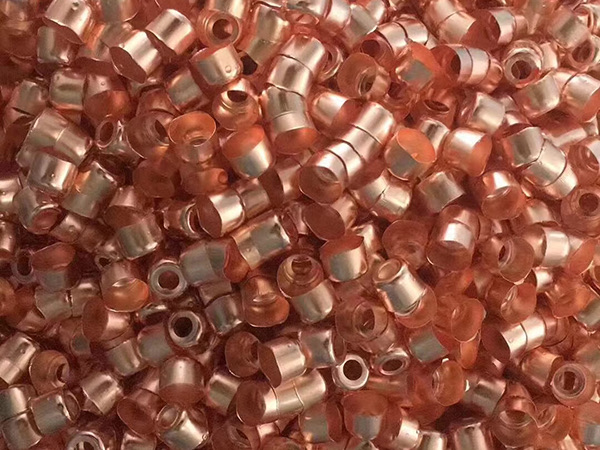Smoothing
Overall, vibratory finishing offers a wide range of options for modifying the surface properties of parts, making it a versatile and cost-effective solution for a variety of manufacturing applications. By selecting the right media and process for the job, manufacturers can achieve the precise finish they need to meet the demands of their customers and stay competitive in their industry.
In some applications, a matt finish surface with increased surface roughness is desired. This property can be achieved with ceramic media and is particularly important in the automotive industry for applications such as friction pads. By using the right type of media and finishing process, manufacturers can achieve a surface that is not only functional but also visually appealing.
One of the key benefits of vibratory finishing is the ability to modify the surface properties of parts using different types of media. Depending on the application and material being finished, different types of media may be selected to achieve the desired finish. For example, ceramic media is a popular choice for deburring and pre-painting finishing, as it offers an economical way to achieve a smooth surface without the need for costly additional processes. This type of media is especially effective at removing cutting marks left behind by machining or wheel grinding processes, which are common in many component manufacturing operations. In contrast, plastic media is often preferred for soft metal materials such as aluminum, copper, and zamak3, as it can deliver a superior pre-plating finish without damaging the metal surface. By using the right media for the job, manufacturers can achieve a high-quality finish that meets their precise specifications and requirements. |  |
Somerset (/ˈsʌmərsɪt, -sɛt/ ⓘ SUM-ər-sit, -set;[2] archaically Somersetshire /ˈsʌmərsɪt.ʃɪər, -sɛt-, -ʃər/ SUM-ər-sit-sheer, -set-, -shər) is a ceremonial county in South West England. It is bordered by the Bristol Channel, Gloucestershire, and Bristol to the north, Wiltshire to the east and the north-east, Dorset to the south-east, and Devon to the south-west. The largest settlement is the city of Bath, and the county town is Taunton.
Somerset is a predominantly rural county, especially to the south and west, with an area of 4,171 km2 (1,610 sq mi) and a population of 965,424. After Bath (101,557), the largest settlements are Weston-super-Mare (82,418), Taunton (60,479), and Yeovil (49,698). Wells (12,000) is a city, the second-smallest by population in England. For local government purposes the county comprises three unitary authority areas: Bath and North East Somerset, North Somerset, and Somerset. Bath and North East Somerset Council is a member of the West of England Combined Authority.
The centre of Somerset is dominated by the Levels, a coastal plain and wetland. The north-east contains part of the Cotswolds uplands and all of the Mendip Hills, which are both national landscapes; the west contains the Quantock Hills and part of the Blackdown Hills, which are also national landscapes, and most of Exmoor, a national park. The major rivers of the county are the Avon, which flows through Bath and then Bristol, and the Axe, Brue, and Parrett, which drain the Levels.
There is evidence of Paleolithic human occupation in Somerset, and the area was subsequently settled by the Celts, Romans and Anglo-Saxons. The county played a significant part in Alfred the Great's rise to power, and later the English Civil War and the Monmouth Rebellion. In the later medieval period its wealth allowed its monasteries and parish churches to be rebuilt in grand style; Glastonbury Abbey was particularly important, and claimed to house the tomb of King Arthur and Guinevere. The city of Bath is famous for its Georgian architecture, and is a UNESCO World Heritage Site. The county is also the location of Glastonbury Festival, one of the UK's major music festivals.
